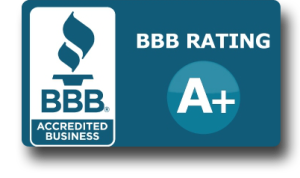Reverse Mortgage for Purchase Details by Forbes
“The government saw enough people using a costlier and more complicated two-step process — obtaining a traditional mortgage to purchase the home and then using a reverse mortgage to pay off the first one — that it sought to simplify the process and costs,” Pfau writes. “The HECM for Purchase program allows fewer distribution needs from the investment portfolio, because a greater portion of the home’s cost can be financed by the reverse mortgage, which does not require payments until the loan balance becomes due.”
HECM for Purchase is versatile enough that it can be leveraged by retirees who seek to either downsize or upsize their home. For those retirees who wish to use it for downsizing, using HECM for Purchase could allow more assets from the sale of the previous home to be freed up for other purposes, Pfau says.
For those upsizing, and who have the financial means to “manage this sustainably and responsibly,” a HECM for Purchase transaction could allow a borrower to finance the purchase of a more expensive home due to the relative difficulty of obtaining a traditional mortgage later in life.
By using HECM for Purchase to obtain a new home, one of the biggest advantages for seniors is that they can do so without having to shoulder a traditional mortgage payment.
“In terms of coordinating the use of debt for housing, not having to make a monthly mortgage payment reduces the household’s fixed costs and provides potential relief of any need to spend down investments,” Pfau says. “The HECM for Purchase option can be analyzed relative to paying outright for the home with other assets or opening a fifteen-year mortgage if still feasible.”
Also included are six different strategies that Pfau details can illustrate the potentially effective use of HECM for Purchase:
- Use it to, “cover as much of the home cost as allowed, and pay cash for the remainder.” Though there’s no additional availability for a line of credit with this tactic, Pfau notes.
- Cover as much of the home cost as is allowed, and pay cash for the remaining balance. “But subsequently, for years when markets provided positive returns, make a voluntary repayment equal to the traditional mortgage payment, but skip these payments after down-market years,” he says. The resulting line of credit will be bolstered, and can cover the retirement-spending goal if the investment portfolio is depleted by a down market.
- “Open a 3.5 percent fixed-rate, fifteen-year conventional mortgage with 20 percent down; open the HECM only as a last resort (if the investment portfolio depletes),” Pfau says.
- “Pay cash for the home; open the HECM only as last resort (if the investment portfolio depletes).”
- “Open a 3.5 percent fixed-rate, fifteen-year conventional mortgage with 20 percent down. Open a HECM line of credit for later use once the fifteen-year mortgage has been fully repaid.”
- “Pay cash for the home and (immediately) open a HECM line of credit on the home to use for retirement spending if/when the investment portfolio depletes.”
Many of these tactics are used to avoid sequence of returns risk. Read the full article at Forbes, sourced from Pfau’s book “Reverse Mortgages: How to Use Reverse Mortgages to Secure Your Retirement.” . brought to you by Reverse Mortgage Alabama in Birmingham and Huntsville.











Leave a Reply